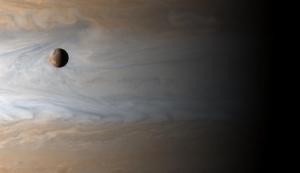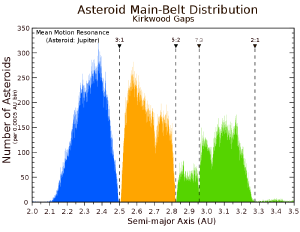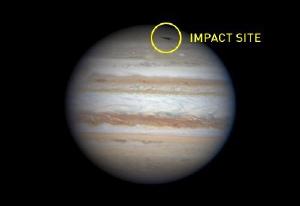Blog
Good to be
the King
30 March 2014
 NASA
NASAJupiter is sometimes said to be a failed star, with a mass just a bit too small to fuse elements in its core. This isn’t really an accurate description, since the it takes at least 13 times the mass of Jupiter to initiate fusion. The Sun is a thousand times more massive than Jupiter, so it is unfair to compare Jupiter to a star. However, when compared to the other planets in the solar system, Jupiter is king. Jupiter is 2.5 times the mass of all the other planets combined. With all that mass, it dominates the solar system in more ways than one.
 Alan Chamberlain, JPL/Caltech
Alan Chamberlain, JPL/CaltechOne of the ways Jupiter dominates is through the asteroid belt. The gravitational pull of Jupiter gave planetoids within what is now the asteroid belt an extra bit of orbital energy, causing collisions to be more frequent and more violent. It is part of the reason the belt is a distribution of smaller objects rather than a single planet. Even today asteroids in the belt are clustered into groups separated by gaps known as Kirkwood gaps. This gaps occur because of a gravitational resonance with Jupiter.
Another way Jupiter affects our solar system is through its interaction with comets. Comets can be divided into long period and short period comets. Long period comets originate from the Oort cloud, and usually enter the inner solar system once, never to be seen again for thousands of years. Short period comets have orbital periods of less than 200 years, and are long period comets that have been deflected by one or more of the outer planets into a shorter orbit. Usually the planet doing the deflecting is Jupiter.
 NASA
NASAIt’s a commonly held idea that Jupiter actually protects Earth from comet collisions by deflecting them, or even colliding with them. This idea gained popularity when the comet Shoemaker-Levy 9 collided with Jupiter in 1994. But in fact Jupiter can deflect a comet toward us just as easily as it can away from us. So the role of Jupiter as Earth’s protector isn’t likely to be accurate.
There is, however, a role Jupiter played that had a significant benefit. Jupiter happens to have four large moons. These moons are large enough and bright enough that they can be observed with a small telescope. So in the 1600s when Galileo pointed his telescope at Jupiter, he could observe the four moons orbiting Jupiter. It demonstrated to Galileo that everything did not orbit the Earth, and pointed him toward a more modern understanding of the Universe.
Up next: Saturn